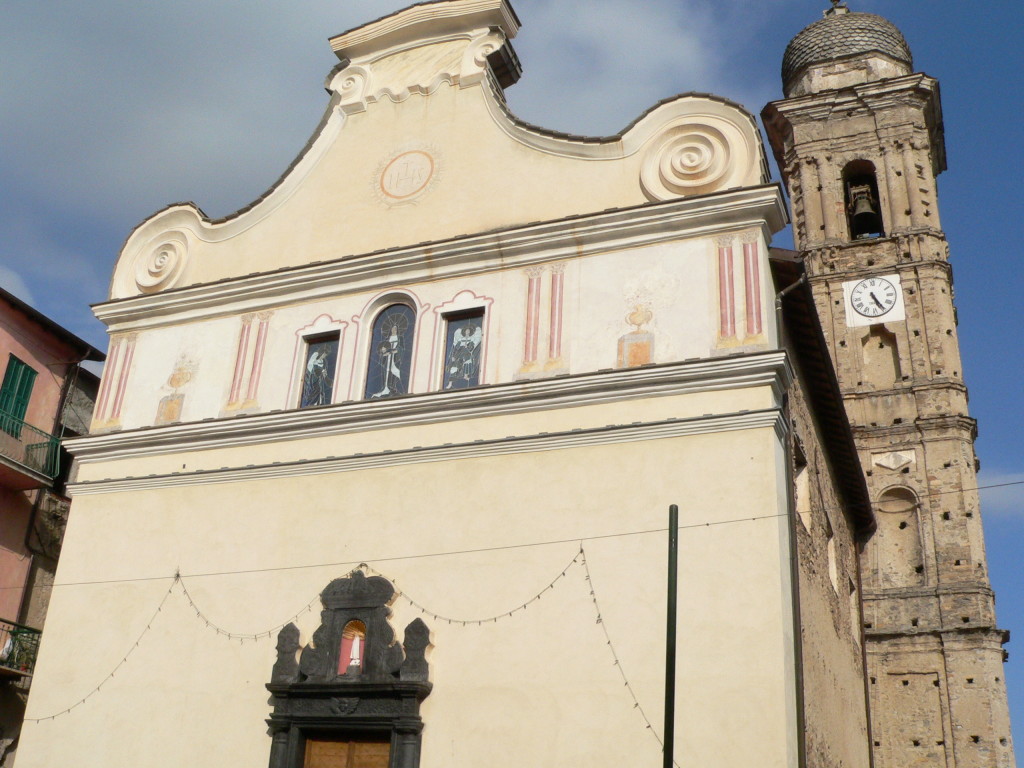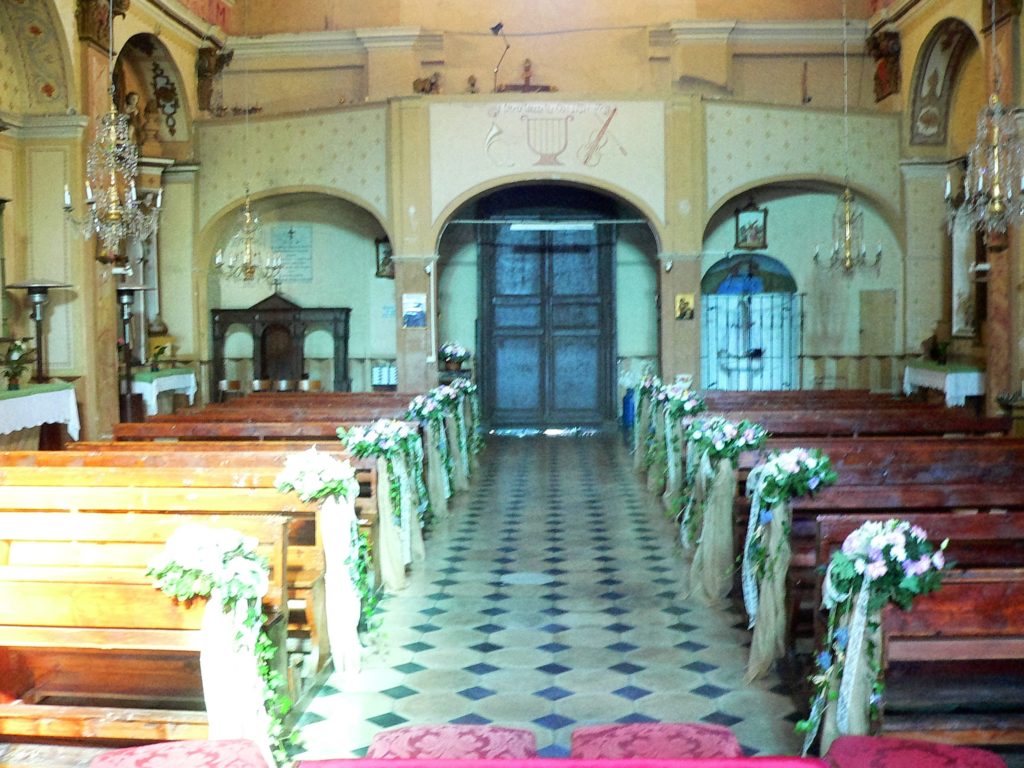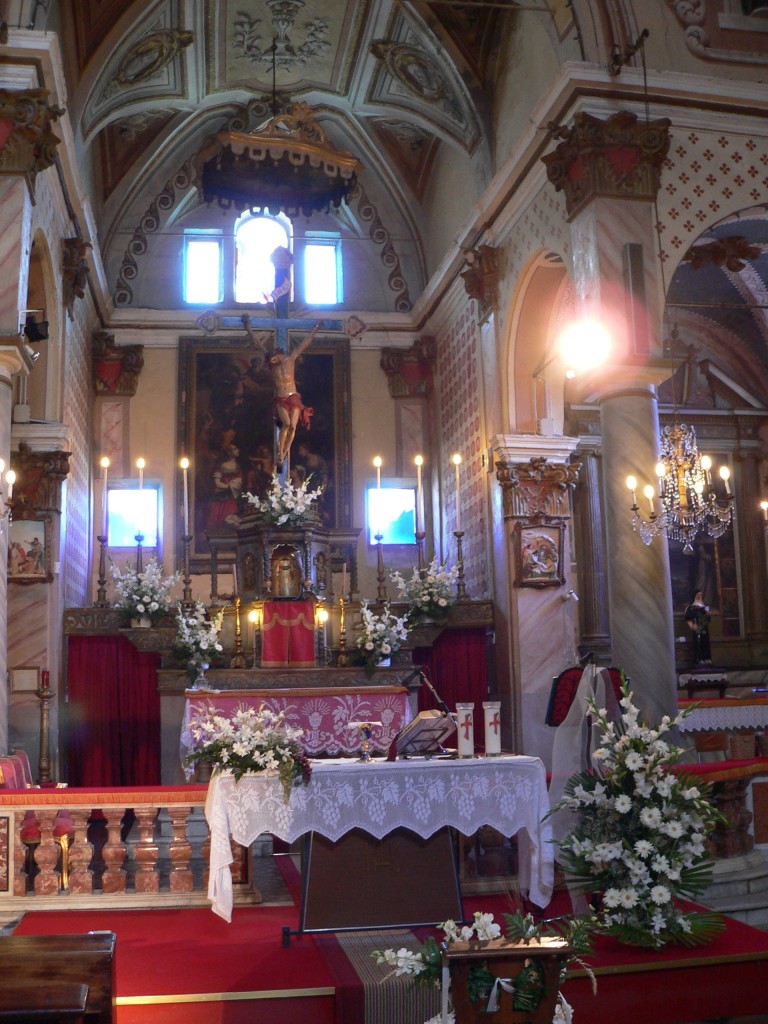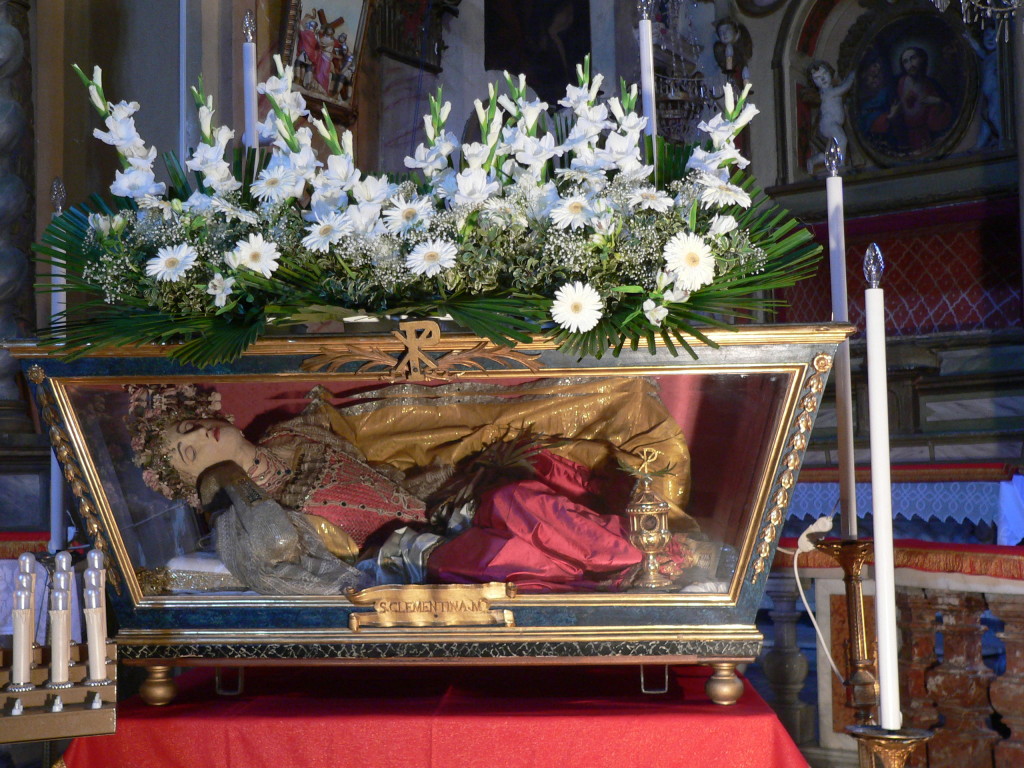

With the population growth, from 1550, the construction of the new parish church dedicated to the Nativity of the Virgin Mary, the patron saint of the village began.
In 1596 the church of Andagna was separated from the parish of Triora in accordance with the orders issued a decade earlier by Bishop Nicolò Mascardi. The local authorities decided then to build a new and larger building of worship, inside the village, abandoning the ancient site of the church, dedicated to St. Martin's Church, whose original structure can be dated around the fifteenth century on the basis of some stone fragments placed near the entrance of the church itself. The new project had a construction period of about forty years, as the start of works is documented in 1644.
The parish church is dedicated to the Nativity of the Virgin Mary, and is located in the centre of the village. The parish church, dedicated to the Nativity of the Virgin Mary, is located in the centre of the village. Its foundation stone was placed in March 1644, and with it a gilded brass medal with the effigy of Christ carrying the cross and some relics of Saints Philip and Peter martyrs were walled in the foundations. Great was the enthusiasm for the new church, but soon it was realized that the necessary means were not available to complete the task. Every possible financial aid was used to complete the project and in September 1749 the church was finally completed. In 1831, the church of Andagna was incorporated into the diocese of Ventimiglia with the Papal Bull of Gregory XVI.
The Nativity of the Virgin Mary's parish church is located in the heart of the small mountain village, with access from the main square. The facade is very simple and plastered and is characterized by a beautiful portal in local slate e conclusa da un coronamento a timpano con spirali laterali, sotto il quale si aprono tre piccole finestre inquadrate da un architettura dipinta. I prospetti laterali e la zona absidale, esternamente, sono in pietra a vista, così come il campanile, a pianta quadrata, posto sul lato destro e con copertura a squame in ardesia. L’interno, a navata unica, a pianta rettangolare è concluso da presbiterio, a piante rettangolare, ai lati del quale si trovano due cappelle. Altre cappelle sono ricavate nello spessore dei muri perimetrali, evidenziate da arconi entro i quali sono collocati gli altari. In controfacciata è posta la cantoria. La volta e le pareti sono riccamente ornate con decori geometrici, floreali e cornici dipinte che fingono architetture e decori in stucco che inquadrano sfondati di cielo. Questa decorazione, databile al tardo ottocento-primi novecento, convive con brani dell’originario impianto della metà del Seicento, periodo di costruzione della chiesa, rappresentati dai semicapitelli con volto angelico che concludono le lesene delle pareti laterali, dall’ornamentanzione dei due altari laterali.
Inside the church there are the Saint Clementine's relics, copatrona del paese, donata da Giovanni Battista Rodini. Il corpo di Santa Clementina venne prelevato dalle catacombe di Santa Ciriaca, cioè di S. Lorenzo fuori le mura e consegnato al canonico Rodini il quale provvide, a proprie spese, a far costruire un’artistica urna dorata, con cristalli ai tre lati; procurò far coprire il corpo della Santa con vesti appositamente confezionate impiegando stoffe pregiate e infine si fece carico del trasporto. L’atto di donazione venne rogato il 19 luglio 1789, dal notaro Francesco Maria Faraldi nella casa della famiglia Rodini. Nel 1929 gli artisti Pietro Tirso e Paolo Rodini sostituirono il vetro e ripararono alcuni ornamenti sciupati nel lungo tempo di 140 anni.
Inside the church, there is a 16th century painting of the Annunciation, attributed to the painter Emanuele Maccario da Pigna.


Proloco Andagna
Piazza Niella – Andagna
18010 Molini di Triora (IM)
VAT/tax code 01238750085
Copyright ©2020, Proloco Andagna. All Rights Reserved.
